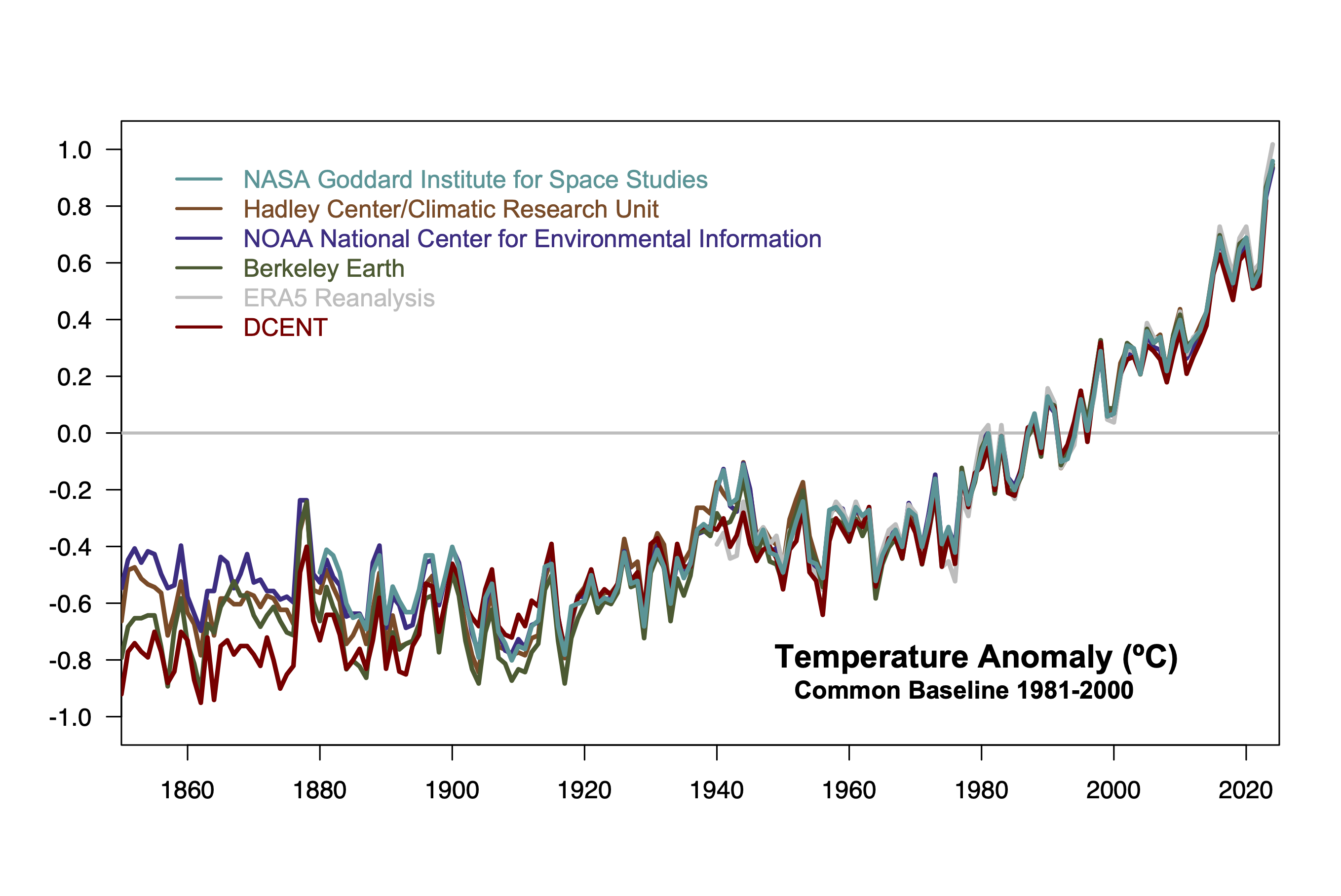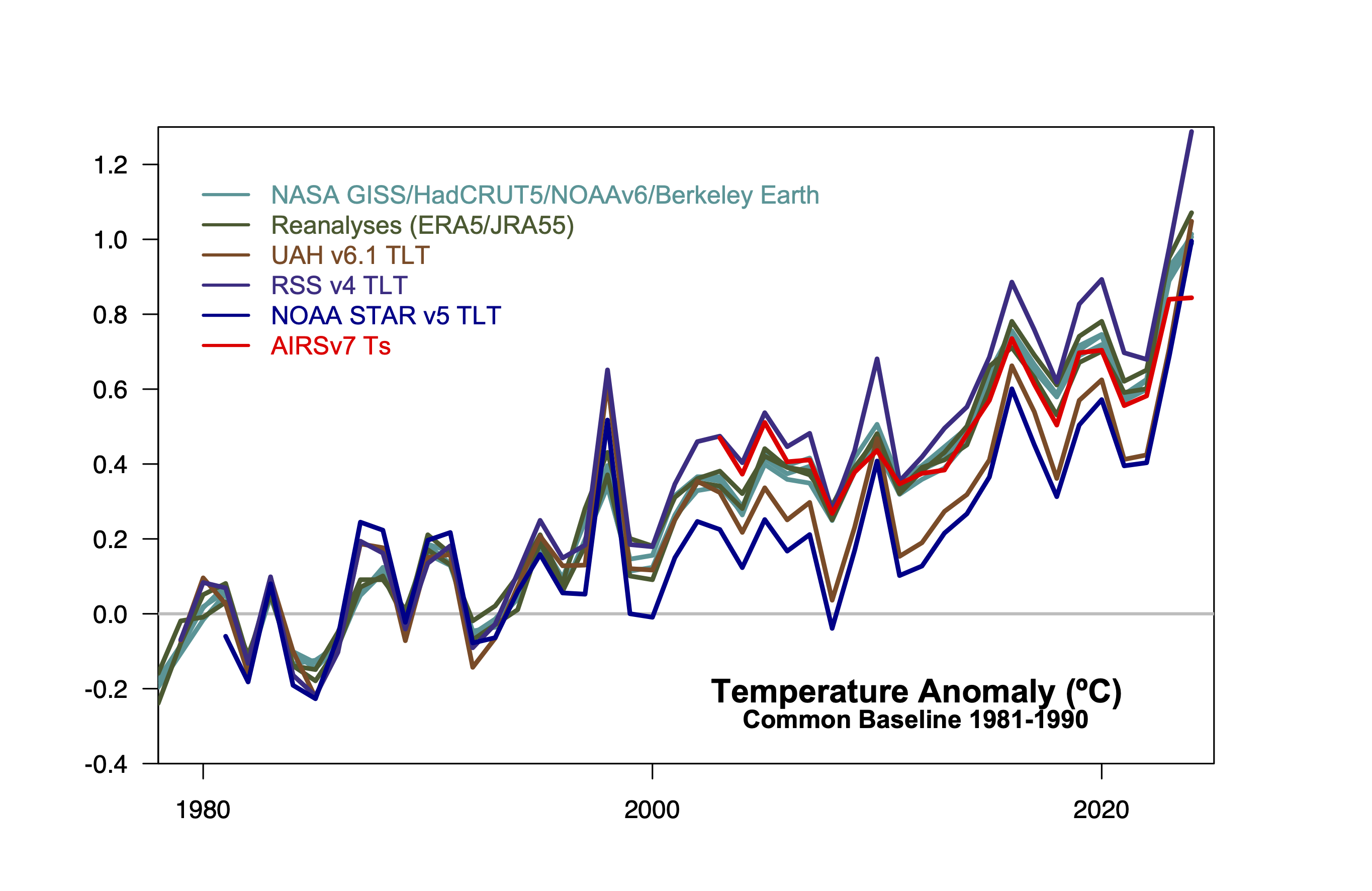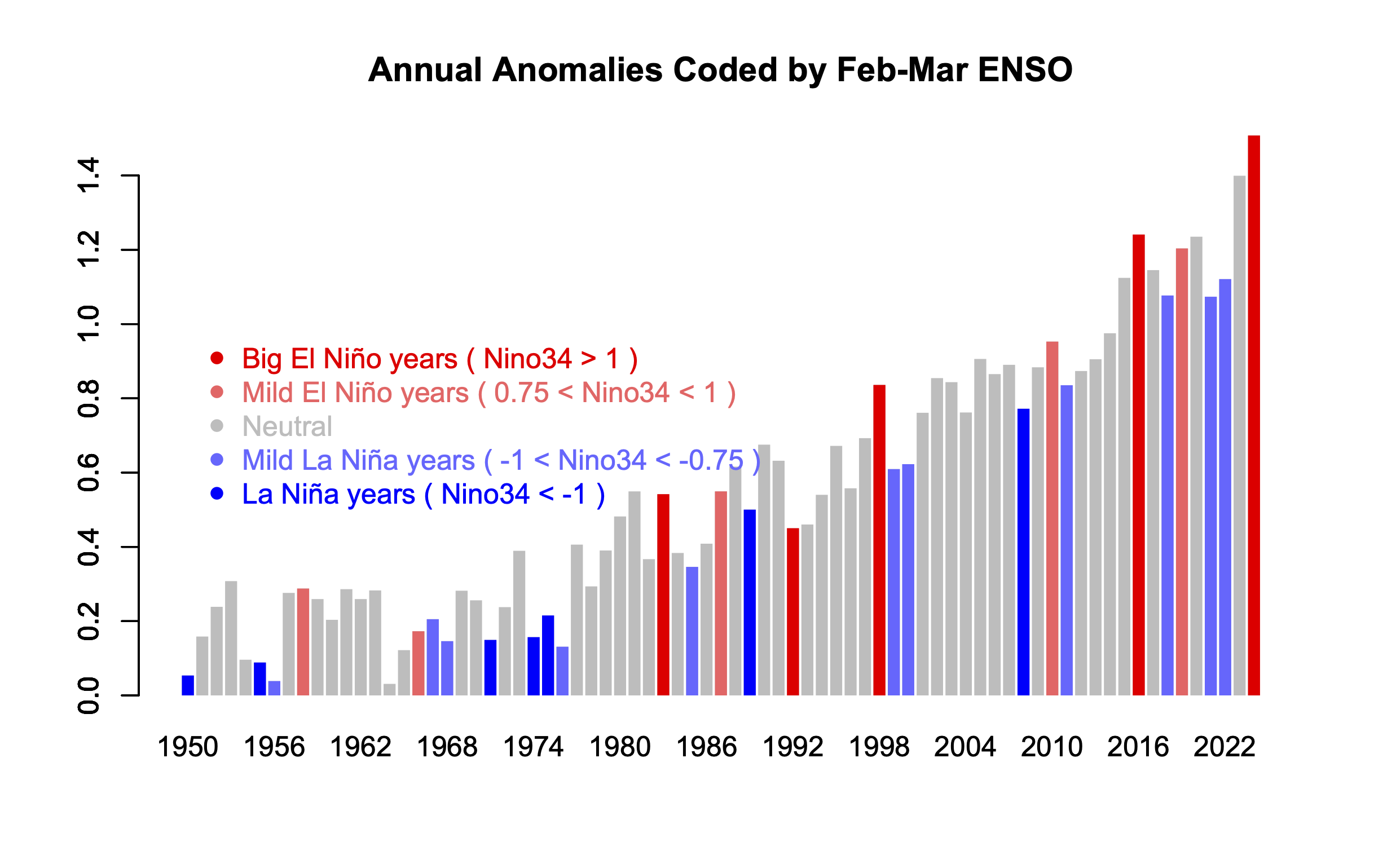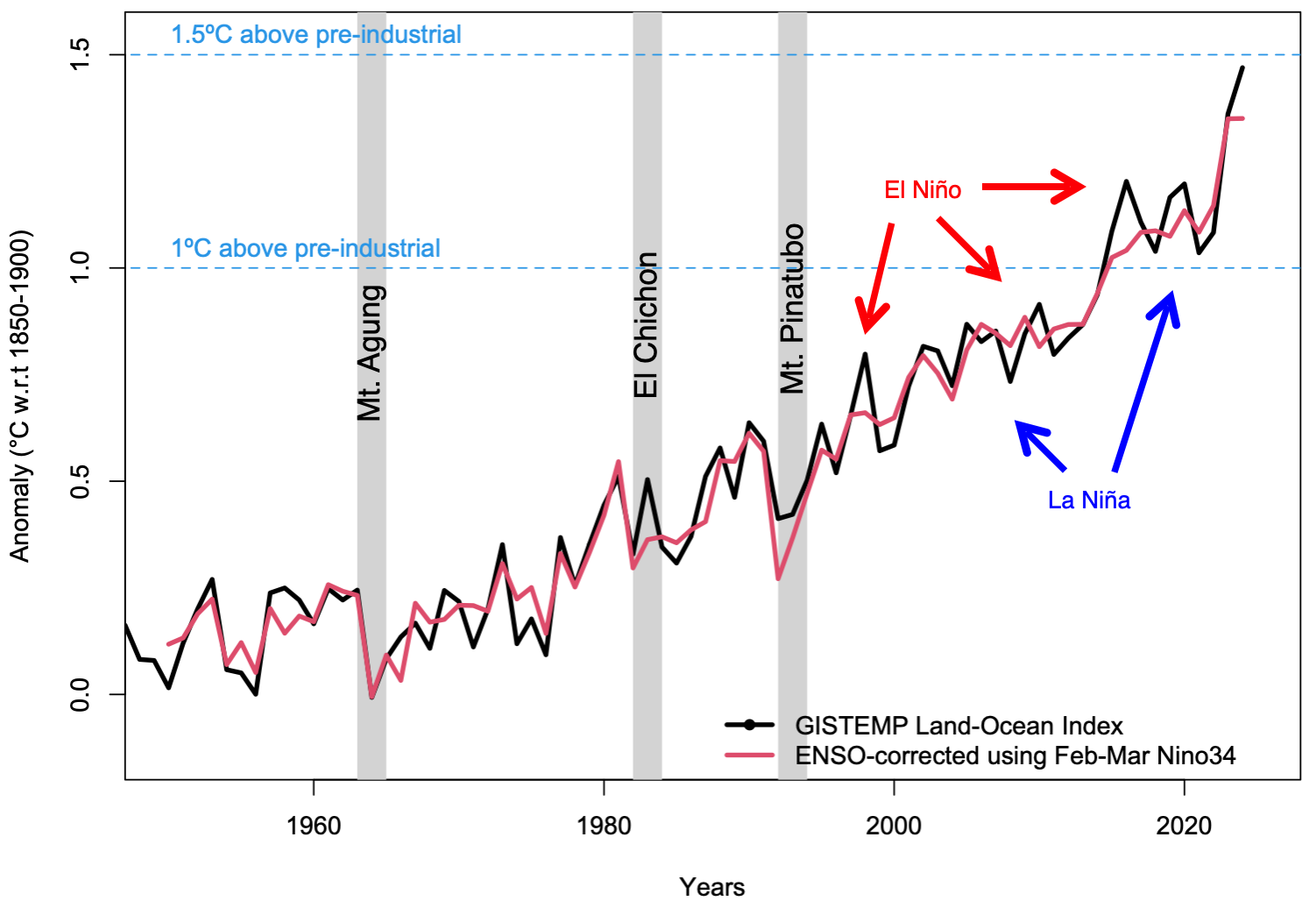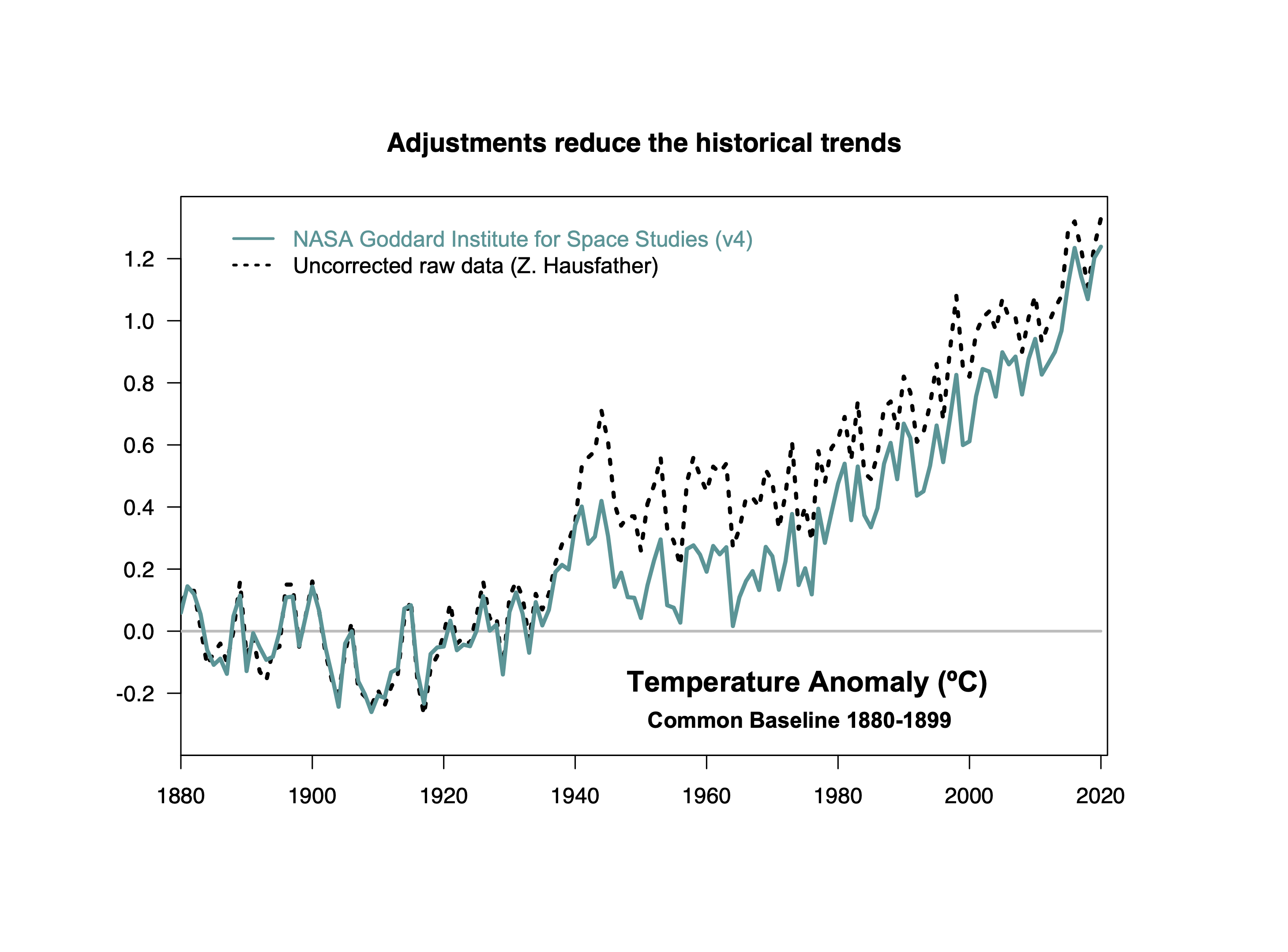This page is a repository of graphs we’ve made related to the surface (and near surface) temperature records, along with some description of what was done. Graphs will be updated as time goes by, and as datasets undergo revisions, or as new datasets are produced. This is not comprehensive, but it does comprise of graphs that we’ve found useful to come back to over the years. As with all graphics here, you can use these anywhere as long as there is credit and a link back here.
